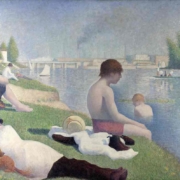Presentation, Adult in the childs and adolescents group 2
The key feature in psychotherapeutic groups with children and adolescents is highlighted by François Sacco in the opening article to this second issue, that focuses once more on the presence of the adult in these groups, in short ‘the encounter between the adult and group participants who are going through the developmental process’. Sacco maintains that even though this connotation is determinating for these groups, it cannot be separated from an other, (to which the French psychoanalyst, with Italian origins, holds to be very important), and that is, “the group…. where sexuality encounters an in fieri sexuality”.
The point of view that Sacco upholds, is that childhood sexuality is not merely ‘a simple stage of development’, but is ‘an essential organizing factor of the psyche’(F.Sacco, 2002).
The implications when children and adolescents are confronted by two adults rather than Read more

